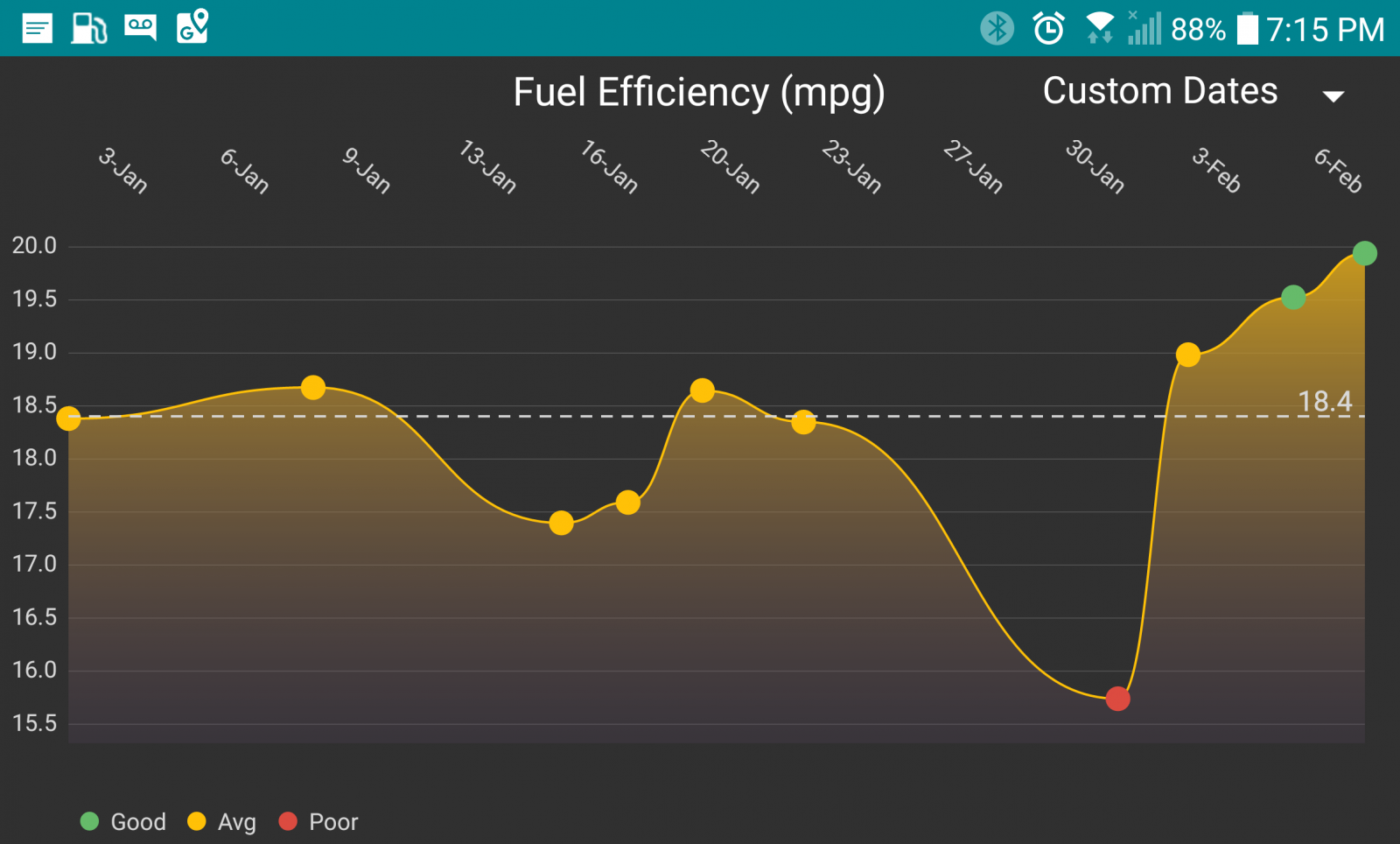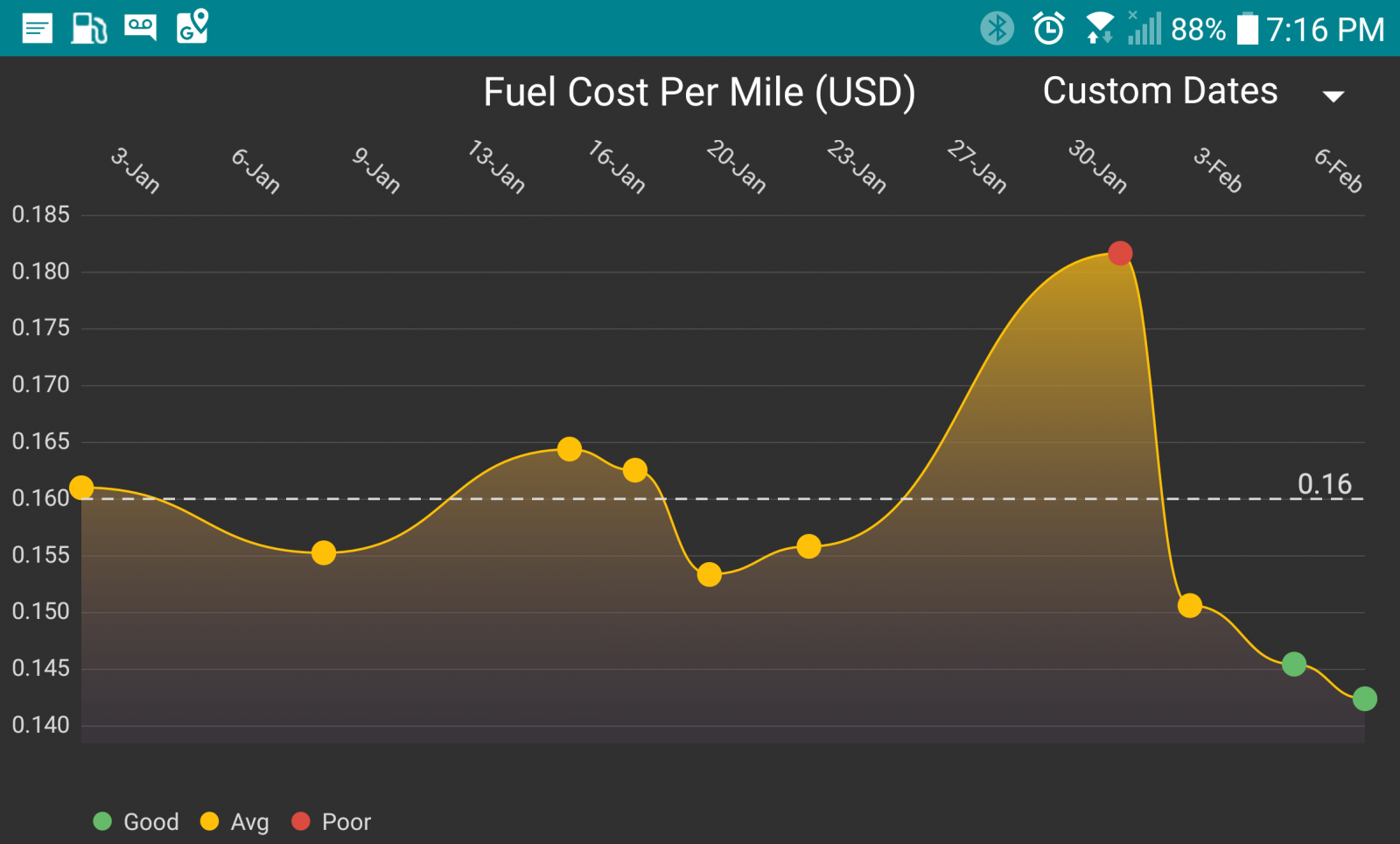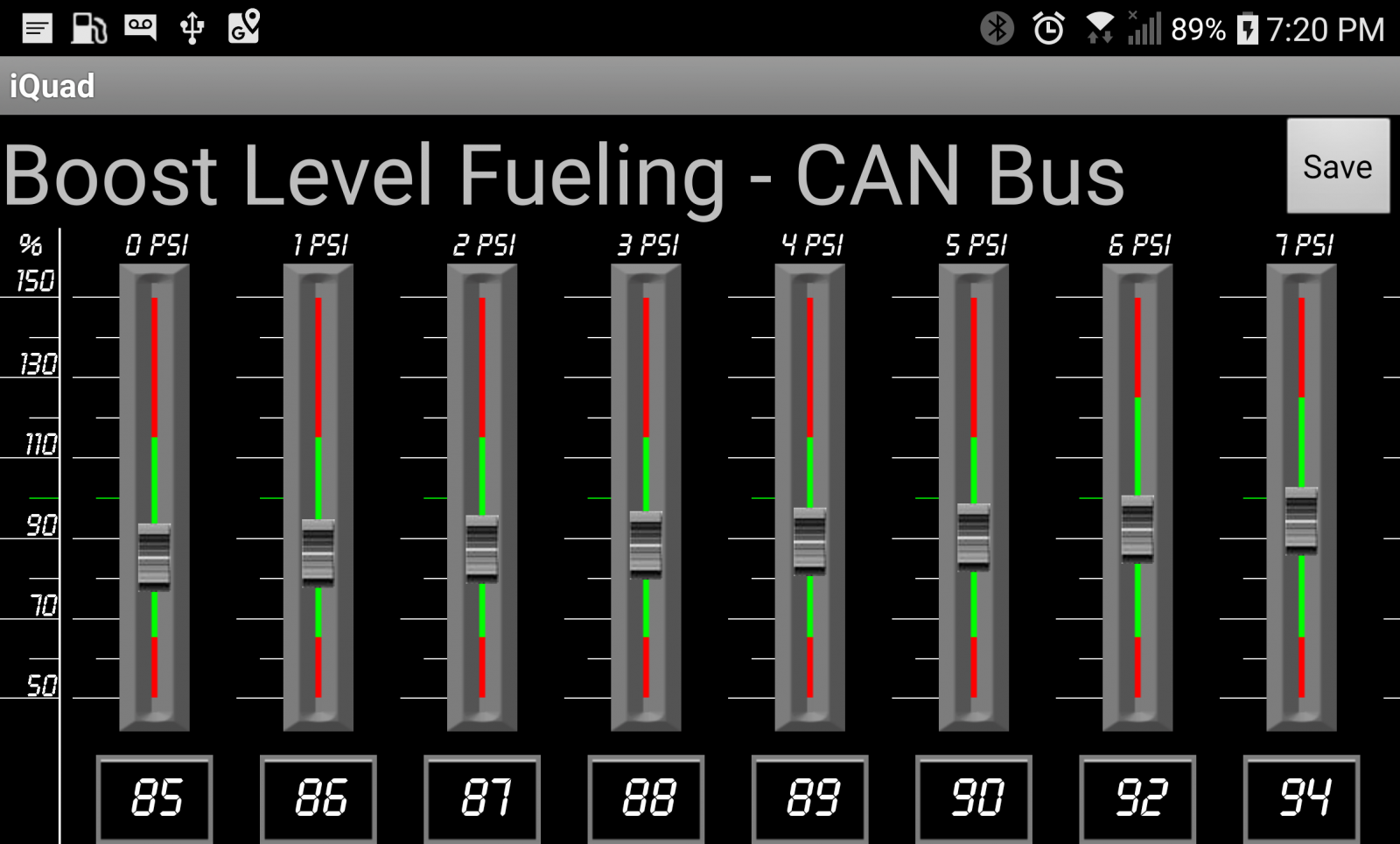
Mopar1973Man
Owner
-
Joined
-
Last visited
-
Currently
Viewing Topic: Linux PC's and Linux Servers
Everything posted by Mopar1973Man
-
Morning Pic For Today...........Post A Pic around your place.....
- 9004 to 9007
Typically 9004 bulbs are 55/60w and 9104 are 80/100w bulbs. https://www.ebay.com/itm/Two-Flosser-9104-12V-100-80-Watt-Off-Road-Rally-Ultra-Bright-9004-Halogen-Bulbs-/172493595102- P0071 - Ambient Air Temperature Sensor Performance
P0071 - Ambient Air Temperature Sensor Performance Theory of Operation The Ambient Air Temperature (AAT) Sensor is located in the driver's door mirror. The Driver's Door Module (DDM) receives the data from the AAT sensor and sends it to the Body Control Module (BCM). The BCM then passes the data on to the Powertrain Control Module (PCM). There are two rationality tests. The first test is: Ignition on/engine running. The second test is: After an eight hour cold soak, at key on the readings for the AAT, Charge Air Cooler (CAC) temperature (D2, DJ), Intake Manifold Temperature (DD, DP), and the Engine Coolant Temperature (ECT) Sensors are all compared. If the temperatures differ by more than a calibrated amount, then the appropriate sensor fault code would be recorded. The PCM rationality check looks at the temperature reading from the sensor over time and ensures that it changes with the engine running. If the sensor reading does not change over a calibrated time limit, the fault will be recorded. When Monitored and Set Conditions When Monitored: This diagnostic runs continuously when the following conditions are met: • Ignition on/engine off, or while the engine is running. Set Conditions: • The Powertrain Control Module (PCM) detects a fault in the Ambient Air Temperature Sensor circuit or is missing the signal. Default Actions: • The MIL is illuminated. Possible Causes AAT SIGNAL CIRCUIT SHORTED TO VOLTAGE AAT SIGNAL CIRCUIT OPEN OR HIGH RESISTANCE AAT SIGNAL CIRCUIT SHORTED TO GROUND AAT SIGNAL CIRCUIT SHORTED TO HEATED MIRROR RETURN GROUND AAT SENSOR GROUND CIRCUIT OPEN OR HIGH RESISTANCE AMBIENT AIR TEMPERATURE (AAT) SENSOR DRIVERS DOOR MODULE (DDM) Always perform the Pre-Diagnostic Troubleshooting procedure before proceeding. (Refer to 28 - DTCBased Diagnostics/MODULE, Powertrain Control (PCM) - Standard Procedure). Diagnostic Test 1. ACTIVE DTC NOTE: Diagnose any CAN C Bus Communication DTCs before continuing. NOTE: If there are any other DTC's related to the Engine Coolant Temperature (ECT) sensor, Charge Air Temperature sensor, or Intake Manifold Temperature Sensor present in the PCM perform thr Diagnostics for those DTCs before continuing with this one. 1. Turn the ignition one. 2. With the scan tool, select View DTCs. Is the DTC active? Yes • Go To 2 No • Perform the INTERMITTENT DTC diagnostic procedure. (Refer to 28 - DTC-Based Diagnostics/MODULE, Powertrain Control (PCM) - Standard Procedure). 2. CHECK THE (G31) AAT SIGNAL CIRCUIT FOR A SHORT TO VOLTAGE 1. Turn the ignition off. 2. Disconnect the Ambient Air Temperature Sensor (AAT) harness connector. 3. Turn the ignition on, engine not running. 4. Measure the voltage on the (G31) AAT Signal circuit in the AAT Sensor harness connector. Is the voltage above 5.2 volts? Yes • Repair the (G31) AAT Signal circuit for a short to voltage. • Perform the PCM VERIFICATION TEST. (Refer to 28 - DTC-Based Diagnostics/MODULE, Powertrain Control (PCM) - Standard Procedure). No • Go To 3 3. CHECK THE (G31) AAT SIGNAL CIRCUIT FOR AN OPEN/HIGH RESISTANCE 1. Turn the ignition off. 2. Disconnect the Driver Door Module (DDM) C2 harness connector. 3. Measure the resistance of the (G31) AAT Signal circuit between the Ambient Air Temperature Sensor harness connector and the DDM C2 harness connector. Is the resistance below 5.0 Ohms? Yes • Go To 4 No • Repair the (G31) AAT Signal circuit for an open or high resistance. • Perform the POWERTRAIN VERIFICATION TEST. (Refer to 28 - DTC-Based Diagnostics/MODULE, Powertrain Control (PCM) - Standard Procedure). 4. CHECK THE (C160) HEATED MIRROR RETURN CIRCUIT FOR AN OPEN/HIGH RESISTANCE 1. Measure the resistance of the (C160) Heated Mirror Return circuit between the Ambient Air Temperature Sensor harness connector and the DDM C2 harness connector. Is the resistance below 5.0 Ohms? Yes • Go To 5 No • Repair the (C160) Heated Mirror Return for an open or high resistance. • Perform the POWERTRAIN VERIFICATION TEST. (Refer to 28 - DTC-Based Diagnostics/MODULE, Powertrain Control (PCM) - Standard Procedure). 5. CHECK THE (G31) AAT SIGNAL CIRCUIT FOR A SHORT TO GROUND 1. Measure the resistance between ground and the (G31) AAT Signal circuit in the AAT Sensor harness connector. Is the resistance above 10k Ohms? Yes • Go To 6 No • Repair the (G31) AAT Signal circuit for a short to ground. • Perform the PCM VERIFICATION TEST. (Refer to 28 - DTC-Based Diagnostics/MODULE, Powertrain Control (PCM) - Standard Procedure). 6. CHECK FOR THE (G31) AAT SIGNAL CIRCUIT SHORTED TO THE (C160) HEATED MIRROR RETURN CIRCUIT 1. Measure the resistance between the (G31) AAT Signal circuit and the (C160) Heated Mirror Return circuit at the AAT Sensor harness connector. Is the resistance above 10k Ohms? Yes • Go To 7 No • Repair the short between the (G31) AAT Signal circuit and the (C160) Heated Mirror Return circuit. • Perform the PCM VERIFICATION TEST. (Refer to 28 - DTC-Based Diagnostics/MODULE, Powertrain Control (PCM) - Standard Procedure). 7. AMBIENT AIR TEMPERATURE SENSOR 1. Turn the ignition off. 2. Replace the Ambient Air Temperature Sensor in accordance with the Service Information.(Refer to 24 - Heating and Air Conditioning/Controls/SENSOR, Ambient Temperature/Removal) 3. Turn the ignition on. 4. With the scan tool, read DTCs. Is the DTC still reporting active or pending? Yes • Go To 8 No • Repair is complete. • Perform the POWERTRAIN VERIFICATION TEST. (Refer to 28 - DTC-Based Diagnostics/MODULE, Powertrain Control (PCM) - Standard Procedure). 8. DRIVERS DOOR MODULE (DDM) 1. Using the wiring diagram/schematic as a guide, inspect the wiring and connectors between the AAT Sensor and the Drivers Door Module (DDM). 2. Look for any chafed, pierced, pinched or partially broken wires. 3. Look for broken, bent, pushed out or corroded terminals. Verify that there is good pin to terminal contact in the AAT Sensor and Drivers Door Module connectors. 4. Perform any Technical Service Bulletins that may apply. Were there any problems found? Yes • Repair as necessary. • Perform the BODY VERIFICATION TEST. (Refer to 28 - DTC-Based Diagnostics/MODULE, Body Control (BCM) /Standard Procedure). No • Replace the Drivers Door Module (DDM) in accordance with the Service Information. • Perform the BODY VERIFICATION TEST. (Refer to 28 - DTC-Based Diagnostics/MODULE, Body Control (BCM) /Standard Procedure).- P007D - Charge Air Cooler Temperature Sensor Circuit High
P007D - Charge Air Cooler Temperature Sensor Circuit High Theory of Operation The Charge Air Cooler Temperature Sensor circuit is represented as the Intake Manifold Temperature Sensor circuit on the Cab and Chassis. On the Regular Cab it is still called the Charge Air Cooler Temperature Sensor circuit. In both configurations, this DTC refers to the circuit that runs from the Powertrain Control Module (PCM) C1 harness connector / terminal 62 to the Temperature/Pressure MAP sensor / terminal 3. The Powertrain Control Module (PCM) supplies 5-Volts to the Charge Air Cooler Temperature signal circuit. The PCM monitors the change in voltage caused by changes in the resistance of the sensor to determine the Charge Air Cooler temperature. The PCM will illuminate the Malfunction Indicator Lamp (MIL) after the diagnostic runs and fails in two consecutive drive cycles. During this time the customer may notice periods of white smoke as well as the fan running more often. The MIL lamp is turned off once the diagnostic runs and passes in four consecutive drive cycles. • When Monitored: The PCM monitors the change in signal voltage and converts this to a temperature value. • Set Condition: The CAC Outlet Temperature Sensor Signal circuit goes above a calibrated threshold. Possible Causes CAC OUTLET TEMPERATURE SENSOR SIGNAL CIRCUIT SHORTED TO VOLTAGE CAC OUTLET TEMPERATURE SENSOR SIGNAL CIRCUIT OPEN/HIGH RESISTANCE CAC OUTLET TEMPERATURE SENSOR RETURN CIRCUIT OPEN/HIGH RESISTANCE TEMPERATURE/PRESSURE MAP SENSOR POWERTRAIN CONTROL MODULE (PCM) Always perform the Pre-Diagnostic Troubleshooting procedure before proceeding. (Refer to 28 - DTCBased Diagnostics/MODULE, Powertrain Control (PCM) - Standard Procedure). Diagnostic Test 1. ACTIVE DTC 1. Turn the ignition on. 2. With the scan tool, record all Freeze frame data. 3. With the scan tool, erase DTCs. 4. Turn the ignition off for 75 seconds. 5. Turn the ignition on. 6. With the scan tool, read DTCs. Did the DTC reset? Yes • Go To 2 No • Perform the INTERMITTENT CONDITION diagnostic procedure. (Refer to 28 - DTC-Based Diagnostics/MODULE, Powertrain Control (PCM) - Standard Procedure). 2. CHECK THE (K48) CAC OUTLET TEMPERATURE SENSOR SIGNAL CIRCUIT FOR A SHORT TO VOLTAGE 1. 2. Ignition on. 3. Disconnect the Temperature/Pressure Map Sensor harness connector. NOTE: Check connectors - Clean/repair as necessary. 4. With a voltmeter connected to ground, measure the voltage of the (K48) CAC Outlet Temperature Sensor Signal circuit at the Temperature/Pressure Map Sensor harness connector. Is the voltage above 5.1 Volts? Yes • Repair the (K48) CAC Outlet Temperature Sensor Signal circuit for a short to voltage. • Perform the POWERTRAIN VERIFICATION TEST - 6.7L. (Refer to 28 - DTC-Based Diagnostics/MODULE, Powertrain Control (PCM) - Standard Procedure). No • Go To 3 3. CHECK THE TEMPERATURE/PRESSURE MAP SENSOR 1. Turn the ignition off. 2. Measure the resistance from the Sensor ground (K916) to the (K48) CAC Outlet Temperature Signal circuit across the terminals at the Temperature/Pressure Map Sensor harness connector. Is the resistance between 300 and 90k Ohms? Yes • Go To 4 No • Replace the Temperature/Pressure MAP Sensor in accordance with the Service Information.(Refer to 14 - Fuel System/Fuel Injection/SENSOR, TMAP-Intake Manifold/Removal) • Perform the POWERTRAIN VERIFICATION TEST - 6.7L. (Refer to 28 - DTC-Based Diagnostics/MODULE, Powertrain Control (PCM) - Standard Procedure). 4. CHECK THE (K48) CAC OUTLET TEMPERATURE SENSOR SIGNAL CIRCUIT FOR AN OPEN/HIGH RESISTANCE 1. Disconnect the PCM C1 harness connector. NOTE: Check connectors - Clean/repair as necessary. 2. Measure the resistance of the (K48) CAC Outlet Temperature Sensor Signal circuit between the Temperature/Pressure Map Sensor harness connector and the PCM C1 harness connector. Is the resistance below 5.0 Ohms? Yes • Go To 5 No • Repair the (K48) CAC Outlet Temperature Sensor Signal circuit for an open or high resistance. • Perform the POWERTRAIN VERIFICATION TEST - 6.7L. (Refer to 28 - DTC-Based Diagnostics/MODULE, Powertrain Control (PCM) - Standard Procedure). 5. CHECK THE (K916) INTAKE MANIFOLD TEMPERATURE SENSOR RETURN CIRCUIT FOR AN OPEN/HIGH RESISTANCE 1. Measure the resistance of the (K916) Intake Manifold Temperature Sensor Ground circuit between the Temperature/Pressure Map Sensor harness connector and the PCM C1 harness connector. Is the resistance below 5.0 Ohms? Yes • Go To 6 No • Repair the (K916) Temperature/Pressure MAP Sensor ground circuit for an open or high resistance. • Perform the POWERTRAIN VERIFICATION TEST - 6.7L. (Refer to 28 - DTC-Based Diagnostics/MODULE, Powertrain Control (PCM) - Standard Procedure). 6. POWERTRAIN CONTROL MODULE 1. Disconnect all PCM harness connectors. 2. Disconnect all related in-line harness connections (if equipped). 3. Disconnect the related component harness connectors. 4. Inspect harness connectors, component connectors, and all male and female terminals for the following conditions: • Proper connector installation. • Damaged connector locks. • Corrosion. • Other signs of water intrusion. • Weather seal damage (if equipped). • Bent terminals. • Overheating due to a poor connection (terminal may be discolored due to excessive current draw). • Terminals that have been pushed back into the connector cavity. • Perform a terminal drag test on each connector terminal to verify proper terminal tension. Repair any conditions that are found. 5. Reconnect all PCM harness connectors. Be certain that all harness connectors are fully seated and the connector locks are fully engaged. 6. Reconnect all in-line harness connectors (if equipped). Be certain that all connectors are fully seated and the connector locks are fully engaged. 7. Reconnect all related component harness connectors. Be certain that all connectors are fully seated and the connector locks are fully engaged. 8. With the scan tool, erase DTCs. 9. Using the recorded Freeze Frame and Environmental Data, along with the When Monitored and Set Conditions above, operate the vehicle in the conditions that set the DTC. 10. With the scan tool, read PCM DTCs. Did the DTC return? Yes • Replace the Powertrain Control Module (PCM) in accordance with the Service Information. (Refer to 08 - Electrical/8E - Electronic Control Modules/MODULE, Powertrain Control/Removal) . • Perform the PCM VERIFICATION TEST. (Refer to 28 - DTC-Based Diagnostics/MODULE, Powertrain Control (PCM) - Standard Procedure). No • Test complete. • Perform the PCM VERIFICATION TEST. (Refer to 28 - DTC-Based Diagnostics/MODULE, Powertrain Control (PCM) - Standard Procedure).- Another Quadzilla question
Basically Edge products (Edge EZ, Edge Comp and Edge Juice) are a canned tune. The software is based on stock injectors. Larger injectors require a shorter amount of injection duration vs a stock injector. So all these canned tune boxes won't work with larger injectors cleanly. Now Quadzilla Adrenaline you can cut below stock rate. If you set at 100% fuel across the board that would be stock fuel. Like myself I'm running those 7 x 0.010 @ 320 bar injectors. Now Being the pop ressure is higher they are cleaner burning. Require slightly more fuel duration starting at 85% and working my way up to full 150% now. I've got my wire tap turned OFF. I'll come back to that soon. But I'm looking at getting the most MPG's from the injectors as I can. Being that they are popped at 320 bar I needed to RETARD timing. Yeap... Retard it about 3 degrees from what my past injectors need. Net result... Weather lows -9*F and highs +33*F for today. The very next MPG after the 15.5 MPG dip was the last run of the 7 x 0.0085 which the pop pressure was way off... MPG history. Cost per mile... 2 cents per mile cheap now even with larger injectors.- Dead Pedal at start up
That would help to list all active error codes this will at least point us in the right direction.- Dead truck P0216
Remember if you remove the VP44. This will not resolve all the electronics on the truck still. Still going to have an ECM that will be screaming codes. There will be still the PCM and other computers. P7100 pump will not remove these computers. P7100 pumping a fly by wire cruise will disable cruise control for your truck. No way to feed fuel data to missing VP44. Lose the dynamic timing of the Vp44 for static timing of the p-pump.- What does the red light on my grounds mean?
Quickie on induction cooktops and the principals... Basically the high current flow there the cable is the magnetic field and the nut being the iron content. The magnetic field now heats the nut.- LED lighting - Interior lighting
Links are in my first post for what I used.- That face you make when...
I hate when I give it away that I'm not stock. Like sitting at a left turn light, snaps green make your left and roll into the throttle and the tires start smoking. Now either the race is on or they give up. Dang...- What does the red light on my grounds mean?
Oh yeah, I know the feelling... Like myself, I've got my herbal way of relaxing... Work mode fading away...- Spare tire bumper mounted carrier
Same here but both of us have 4 inch exhaust where @Dieselfuture is running 5 inch exhaust and there is not enough room.- 2001 Ram 2500 complete interior restoration
Heated seats require the High Line CTM and it wiring loom. Power seats again require the circuit breaker (cab fuse panel) and the wiring loom.- 04 ram 3500 5.9 cummins rev problem
Explain more. Are you stabbing the throttle and getting hanging RPM?- That face you make when...
Yeah, @JAG1 keeps Chipmunking all my bolts into his intercooler pipe. I won't argue that statement. I've gotta be nuts to hang out with all you on the internet.- 4x4 Troubleshooting
I would pull it completely and inspect the shift fork and the sliding collar. In the case of my 1996 Dodge 1500 the vacuum motor had been struck by an object and then was bent enough that the vacuum motor have issues. (Binding issues). You might find the shift fork is worn or the shoes on the fork are worn.- That face you make when...
Hmmm... Seem like you got the infection too.- That face you make when...
- Quad over fueling even starting at 60%
There is a reason it took me 17 years to finally buy 150HP injectors. I been doing my own study work to make sure choices I make are going to be a working choice.- What does the red light on my grounds mean?
I find these goofy photos and go ... Are people this dumb? Really?!?!- DAP Injector Upgrade 7 x 0.010 @ 320 Bar
Bingo. Just like I learned years ago. This what made it impossible to upgrade to larger injectors. Just like I said the Edge Products are designed for stock injectors. @dripley just confirms what I said about the larger injectors. It all based on the fuel map being too steep for any other injectors. This was the problem in the early years when people started upgrading but the tuners could work with oversized injectors. Like I'm learning about the larger injectors. Being the bigger injector nozzles can flow more fuel in a shorter time this focuses the fuel right in time. Instead of the smaller injectors that spread it over a long period of time because it flows much less. Then you crank up the rail pressure (either by CANBus or Wiretap) now you're making the injection event longer to flow the extra fuel on a small injector nozzle. This actually would reduce the stress on the VP44 on the pump section. If I idle with 13% engine load and to cruise at 60 MPH I'm barely 17% engine load.- Dead truck P0216
- P007C - Charge Air Cooler Temperature Sensor Circuit Low
P007C - Charge Air Cooler Temperature Sensor Circuit Low Theory of Operation The Charge Air Cooler Temperature Sensor circuit is represented as the Intake Manifold Temperature Sensor circuit on the Cab and Chassis. On the Regular Cab it is still called the Charge Air Cooler Temperature Sensor circuit. In both configurations, this DTC refers to the circuit that runs from the Powertrain Control Module (PCM) C1 harness connector / terminal 62 to the Temperature/Pressure MAP sensor / terminal 3. The Powertrain Control Module (PCM) supplies 5-Volts to the Charge Air Cooler Temperature signal circuit. The PCM monitors the change in voltage caused by changes in the resistance of the sensor to determine the Charge Air Cooler temperature. The PCM will illuminate the Malfunction Indicator Lamp (MIL) after the diagnostic runs and fails in two consecutive drive cycles. During this time the customer may notice periods of white smoke as well as the fan running more often. The MIL lamp is turned off once the diagnostic runs and passes in four consecutive drive cycles. • When Monitored: The PCM monitors the change in signal voltage and converts this to a temperature value. • Set Condition: The CAC Outlet Temperature Sensor Signal circuit goes below a calibrated threshold. Possible Causes CAC OUTLET TEMPERATURE SENSOR SIGNAL CIRCUIT SHORTED TO GROUND CAC OUTLET TEMPERATURE SENSOR SIGNAL CIRCUIT OPEN/HIGH RESISTANCE TEMPERATURE/PRESSURE MAP SENSOR POWERTRAIN CONTROL MODULE (PCM) Always perform the Pre-Diagnostic Troubleshooting procedure before proceeding. (Refer to 28 - DTCBased Diagnostics/MODULE, Powertrain Control (PCM) - Standard Procedure). Diagnostic Test 1. ACTIVE DTC 1. Turn the ignition on. 2. With the scan tool, record all Freeze frame data. 3. With the scan tool, erase DTCs. 4. Turn the ignition off for 75 seconds. 5. Turn the ignition on. 6. With the scan tool, read DTCs. Did the DTC reset? Yes • Go To 2 No • Perform the INTERMITTENT CONDITION diagnostic procedure. (Refer to 28 - DTC-Based Diagnostics/MODULE, Powertrain Control (PCM) - Standard Procedure). 2. CHECK THE (K48) CAC OUTLET TEMPERATURE SENSOR SIGNAL CIRCUIT FOR A SHORT TO GROUND 1. 2. Turn the ignition off. 3. Disconnect the Temperature/Pressure Map Sensor harness connector. 4. Disconnect the PCM C1 harness connector. NOTE: Check connectors - Clean/repair as necessary. 5. Measure the resistance between ground and the (K48) CAC Outlet Temperature Sensor Signal circuit at the Temperature/Pressure MAP Sensor harness connector. Is the resistance above 5.0 Ohms? Yes • Go To 3 No • Repair the (K48) CAC Outlet Temperature Sensor Signal circuit for a short to ground. • Perform the POWERTRAIN VERIFICATION TEST - 6.7L. (Refer to 28 - DTC-Based Diagnostics/MODULE, Powertrain Control (PCM) - Standard Procedure). 3. CHECK THE (K48) CAC OUTLET TEMPERATURE SENSOR SIGNAL CIRCUIT FOR AN OPEN/HIGH RESISTANCE 1. Measure the resistance of the (K48) CAC Outlet Temperature Sensor Signal circuit between the Temperature/Pressure Map Sensor harness connector and the PCM C1 harness connector. Is the resistance below 5.0 Ohms? Yes • Go To 4 No • Repair the (K48) CAC Outlet Temperature Sensor Signal circuit for an open or high resistance. • Perform the POWERTRAIN VERIFICATION TEST - 6.7L. (Refer to 28 - DTC-Based Diagnostics/MODULE, Powertrain Control (PCM) - Standard Procedure). 4. TEMPERATURE/PRESSURE MAP SENSOR 1. Replace the Temperature/Pressure MAP Sensor.(Refer to 14 - Fuel System/Fuel Injection/SENSOR, TMAP-Intake Manifold/Removal) 2. Turn the ignition on. 3. With the scan tool, erase DTCs. 4. Turn the ignition off for 75 seconds. 5. Start the vehicle. It may be necessary to drive vehicle to reset DTC. 6. With the scan tool, read DTCs. Did the DTC return? Yes • Go To 5 No • Repair is complete. • Perform the POWERTRAIN VERIFICATION TEST - 6.7L. (Refer to 28 - DTC-Based Diagnostics/MODULE, Powertrain Control (PCM) - Standard Procedure). 5. POWERTRAIN CONTROL MODULE 1. Disconnect all PCM harness connectors. 2. Disconnect all related in-line harness connections (if equipped). 3. Disconnect the related component harness connectors. 4. Inspect harness connectors, component connectors, and all male and female terminals for the following conditions: • Proper connector installation. • Damaged connector locks. • Corrosion. • Other signs of water intrusion. • Weather seal damage (if equipped). • Bent terminals. • Overheating due to a poor connection (terminal may be discolored due to excessive current draw). • Terminals that have been pushed back into the connector cavity. • Perform a terminal drag test on each connector terminal to verify proper terminal tension. Repair any conditions that are found. 5. Reconnect all PCM harness connectors. Be certain that all harness connectors are fully seated and the connector locks are fully engaged. 6. Reconnect all in-line harness connectors (if equipped). Be certain that all connectors are fully seated and the connector locks are fully engaged. 7. Reconnect all related component harness connectors. Be certain that all connectors are fully seated and the connector locks are fully engaged. 8. With the scan tool, erase DTCs. 9. Using the recorded Freeze Frame and Environmental Data, along with the When Monitored and Set Conditions above, operate the vehicle in the conditions that set the DTC. 10. With the scan tool, read PCM DTCs. Did the DTC return? Yes • Replace the Powertrain Control Module (PCM) in accordance with the Service Information. (Refer to 08 - Electrical/8E - Electronic Control Modules/MODULE, Powertrain Control/Removal) . • Perform the PCM VERIFICATION TEST. (Refer to 28 - DTC-Based Diagnostics/MODULE, Powertrain Control (PCM) - Standard Procedure). No • Test complete. • Perform the PCM VERIFICATION TEST. (Refer to 28 - DTC-Based Diagnostics/MODULE, Powertrain Control (PCM) - Standard Procedure).- P007B - Charge Air Cooler Temperature Sensor Circuit Performance
P007B - Charge Air Cooler Temperature Sensor Circuit Performance Theory of Operation The Charge Air Cooler Temperature Sensor circuit is represented as the Intake Manifold Temperature Sensor circuit on the Cab and Chassis. On the Regular Cab it is still called the Charge Air Cooler Temperature Sensor circuit. In both configurations, this DTC refers to the circuit that runs from the Powertrain Control Module (PCM) C1 harness connector / terminal 62 to the Temperature/Pressure MAP sensor / terminal 3. The Powertrain Control Module (PCM) supplies 5-Volts to the Charge Air Cooler Temperature signal circuit. The PCM monitors the change in voltage caused by changes in the resistance of the sensor to determine the Charge Air Cooler temperature. The PCM will illuminate the Malfunction Indicator Lamp (MIL) after the diagnostic runs and fails in two consecutive drive cycles. During this time the customer may notice periods of white smoke as well as the fan running more often. The MIL lamp is turned off once the diagnostic runs and passes in four consecutive drive cycles. When Monitored and Set Conditions When Monitored: This diagnostic runs continuously when the following conditions are met: • With the ignition on. Set Conditions: • The Powertrain Control Module (PCM) detects that at key on engine off, the Intake Manifold Temperature Sensor Signal reads differently than the EGR Orifice Temperature Sensor and Coolant Temperature Sensor. Or, while the engine is running the Powertrain Control Module (PCM) does not read a change in value on the Intake Manifold Temperature Sensor Signal over a pre-determined amount of time. Default Actions: • The MIL is illuminated. Possible Causes AIR CLEANER BOX NOT SEALING PROPERLY TO THE INLET AIR TUBE DIRT OR DEBRIS IN CHARGE AIR COOLING SYSTEM TEMPERATURE/PRESSURE MAP SENSOR Always perform the Pre-Diagnostic Troubleshooting procedure before proceeding. (Refer to 28 - DTCBased Diagnostics/MODULE, Powertrain Control (PCM) - Standard Procedure). 1. ACTIVE DTC NOTE: If there are any 5-Volt supply DTCs present, repair those DTCs before proceeding with this test. 1. Turn the ignition on. 2. With the scan tool, record all Freeze frame data. 3. With the scan tool, erase DTCs. 4. Turn the ignition off for 75 seconds. 5. Turn the ignition on. 6. With the scan tool, read DTCs. Did the DTC return? Yes • Go To 2 No • Perform the INTERMITTENT CONDITION diagnostic procedure. (Refer to 28 - DTC-Based Diagnostics/MODULE, Powertrain Control (PCM) - Standard Procedure). 2. CHECK THE AIR CLEANER BOX FOR PROPER SEALING 1. Check the connection between the Inlet Air Tube and the Air Cleaner Box to make sure that it is sealed properly. Is the Air Cleaner Box to Inlet Air Tube installed and sealed properly? Yes • Go To 3 No • Repair the connection between the Air Cleaner Box and the Inlet Air Tube. • Perform the POWERTRAIN VERIFICATION TEST - 6.7L. (Refer to 28 - DTC-Based Diagnostics/MODULE, Powertrain Control (PCM) - Standard Procedure). 3. CHECK THE CHARGE AIR COOLER AND SYSTEM FOR DIRT OR DEBRIS 1. Remove the hoses at the Charge Air Cooler and Turbo outlet and inspect the system for signs of excessive oil, dirt or debris. Does the Charge Air Cooling system show signs of excessive dirt or debris? Yes • Clean the Charge Air Cooling system in accordance with the service information • Perform the POWERTRAIN VERIFICATION TEST - 6.7L. (Refer to 28 - DTC-Based Diagnostics/MODULE, Powertrain Control (PCM) - Standard Procedure). No • Go To 4 4. CHECK THE TEMPERATURE/PRESSURE MAP SENSOR 1. Let engine cold soak up to eight hours. 2. Turn the ignition on. 3. With the scan tool, monitor Temperature/Pressure MAP Sensor, EGR Orifice Temperature Sensor and Coolant Temperature Sensor. NOTE: Make sure ambient air temperature is above -6.7°C (20°F) when performing this test. NOTE: Make sure there is no external heat source, such as a block heater, operating during this test or within the 8 hour cold soak. Does the CAC Temperature Sensor read differently from the other sensors? Yes • Replace the Temperature/Pressure MAP Sensor in accordance with the Service Information.(Refer to 14 - Fuel System/Fuel Injection/SENSOR, TMAP-Intake Manifold/Removal) • Perform the POWERTRAIN VERIFICATION TEST - 6.7L. (Refer to 28 - DTC-Based Diagnostics/MODULE, Powertrain Control (PCM) - Standard Procedure). No • Go To 5 5. TEMPERATURE/PRESSURE MAP SENSOR 1. Turn the ignition off. 2. Disconnect the Temperature/Pressure MAP Sensor harness connector. 3. Remove the Temperature/Pressure MAP Sensor and reconnect the wiring to the sensor. 4. Turn the ignition on. 5. With the scan tool in Sensors, monitor the Temperature/Pressure MAP Sensor while heating the sensor with an external heat source (DO NOT USE OPEN FLAME). Does the reading from the sensor increase at least 5°F on the scan tool? Yes • Go To 6 No • Replace the Temperature/Pressure MAP Sensor in accordance with the Service Information.(Refer to 14 - Fuel System/Fuel Injection/SENSOR, TMAP-Intake Manifold/Removal) • Perform the POWERTRAIN VERIFICATION TEST - 6.7L. (Refer to 28 - DTC-Based Diagnostics/MODULE, Powertrain Control (PCM) - Standard Procedure). 6. POWERTRAIN CONTROL MODULE 1. Disconnect all PCM harness connectors. 2. Disconnect all related in-line harness connections (if equipped). 3. Disconnect the related component harness connectors. 4. Inspect harness connectors, component connectors, and all male and female terminals for the following conditions: • Proper connector installation. • Damaged connector locks. • Corrosion. • Other signs of water intrusion. • Weather seal damage (if equipped). • Bent terminals. • Overheating due to a poor connection (terminal may be discolored due to excessive current draw). • Terminals that have been pushed back into the connector cavity. • Perform a terminal drag test on each connector terminal to verify proper terminal tension. Repair any conditions that are found. 5. Reconnect all PCM harness connectors. Be certain that all harness connectors are fully seated and the connector locks are fully engaged. 6. Reconnect all in-line harness connectors (if equipped). Be certain that all connectors are fully seated and the connector locks are fully engaged. 7. Reconnect all related component harness connectors. Be certain that all connectors are fully seated and the connector locks are fully engaged. 8. With the scan tool, erase DTCs. 9. Using the recorded Freeze Frame and Environmental Data, along with the When Monitored and Set Conditions above, operate the vehicle in the conditions that set the DTC. 10. With the scan tool, read PCM DTCs. Did the DTC return? Yes • Replace the Powertrain Control Module (PCM) in accordance with the Service Information. (Refer to 08 - Electrical/8E - Electronic Control Modules/MODULE, Powertrain Control/Removal) . • Perform the PCM VERIFICATION TEST. (Refer to 28 - DTC-Based Diagnostics/MODULE, Powertrain Control (PCM) - Standard Procedure). No • Test complete. • Perform the PCM VERIFICATION TEST. (Refer to 28 - DTC-Based Diagnostics/MODULE, Powertrain Control (PCM) - Standard Procedure).- Dodge 1500 Motors
Keep hunting there out there. Cummins started producing retro kit 4BT's for Jeeps and other small vehicles. - 9004 to 9007
Account
Navigation
Search
Configure browser push notifications
Chrome (Android)
- Tap the lock icon next to the address bar.
- Tap Permissions → Notifications.
- Adjust your preference.
Chrome (Desktop)
- Click the padlock icon in the address bar.
- Select Site settings.
- Find Notifications and adjust your preference.
Safari (iOS 16.4+)
- Ensure the site is installed via Add to Home Screen.
- Open Settings App → Notifications.
- Find your app name and adjust your preference.
Safari (macOS)
- Go to Safari → Preferences.
- Click the Websites tab.
- Select Notifications in the sidebar.
- Find this website and adjust your preference.
Edge (Android)
- Tap the lock icon next to the address bar.
- Tap Permissions.
- Find Notifications and adjust your preference.
Edge (Desktop)
- Click the padlock icon in the address bar.
- Click Permissions for this site.
- Find Notifications and adjust your preference.
Firefox (Android)
- Go to Settings → Site permissions.
- Tap Notifications.
- Find this site in the list and adjust your preference.
Firefox (Desktop)
- Open Firefox Settings.
- Search for Notifications.
- Find this site in the list and adjust your preference.














